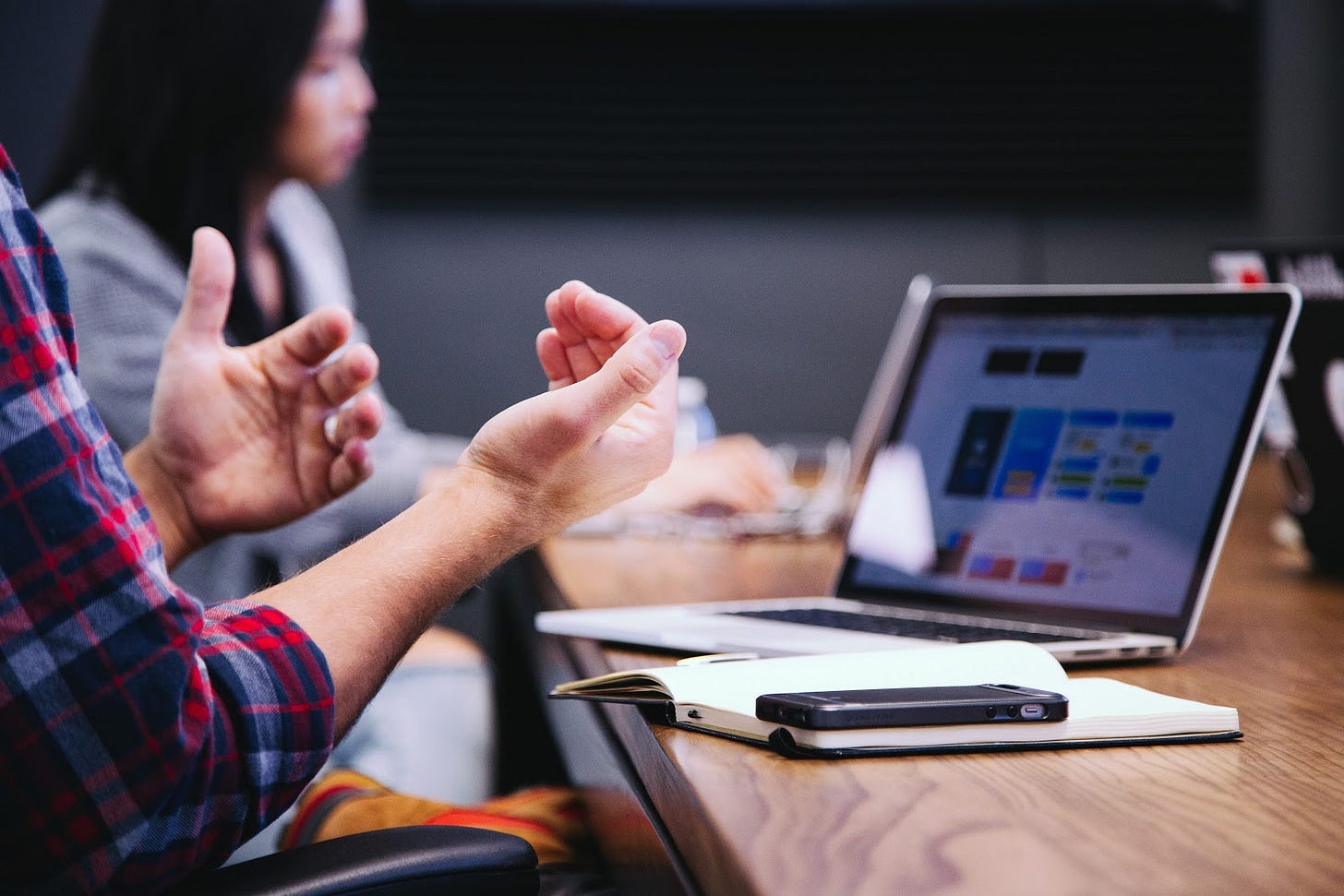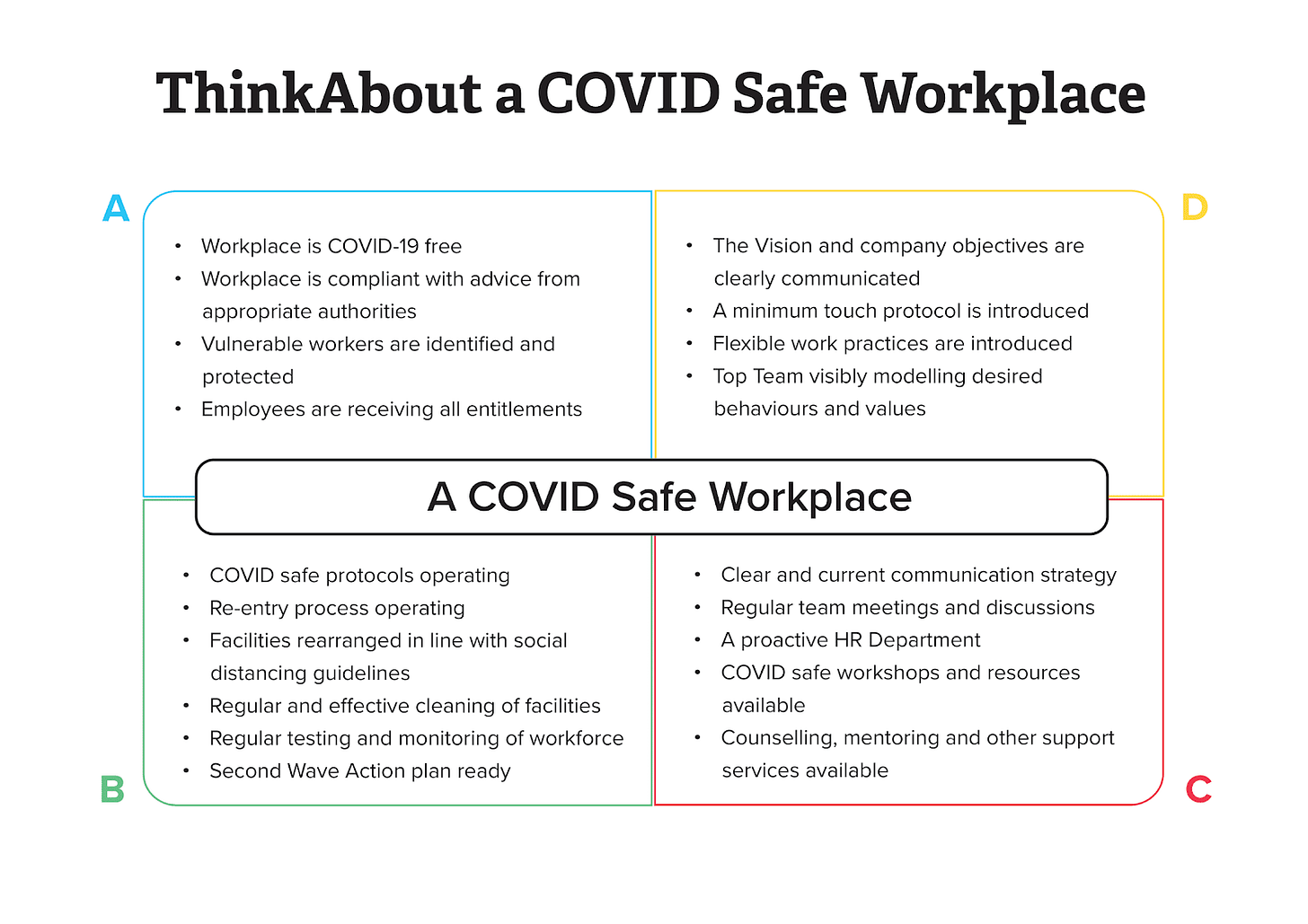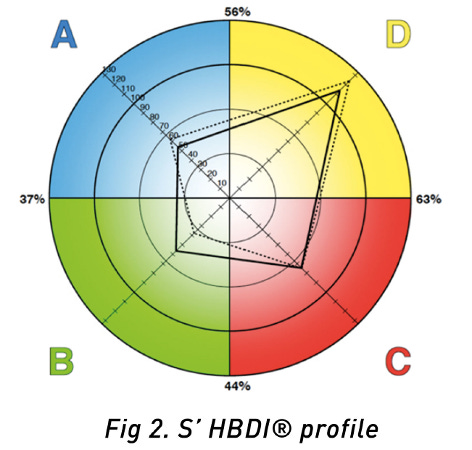Adaptive Mindset
A practical framework to think differently
The Lantern is a newsletter on performance and personal growth written by Prasad Deshpande.
Perspective Matters:
Wherever you are in the world, lockdowns are being lifted; whether self-imposed or through government fiat, this period of stasis is ending. Our process of re-engagement has begun.
We will grieve for missed opportunities-seminars not attended, business deals now in limbo, cancelled trips.
As Sir Richard Branson likes to say “business opportunities are like buses; there’s always another coming around”.
One meeting is nothing in a lifetime of meetings; one deal is just one deal. During the lockdown, I asked my family, friends and clients to reflect on opportunities lost, on the decisions they could not make, and whether these opportunities were bullets that they had dodged. Their responses were revealing.
Opportunity from adversity
Before the pandemic, the founder of an exciting start-up in Silicon Valley offered my friend’s son, S, a ‘dream job’. S, young and ambitious, bought into the vision and the opportunity as head of Sales to grow a new business. He was all set to give up a steady job and equity in his existing company- when I asked him was that wise- he said ‘entrepreneurs need to have an ownership interest.’ Then Covid19 struck, the assumptions did not hold; the start-up laid off people, struggling for survival. S dodged that bullet. His reflection- he fell for an exciting vision, founder’s charisma and a desire to be a part of the successful start-up club.
S is brilliant. He based his decision on his analysis of the business model and the founder's track record. He believed everything else would fall in place. But it simply wasn’t enough, and it will not be enough as we continue to adapt to the ‘new normal.
Becoming adaptive
The way we will now look at the world, our perspective will determine how we deal with the crisis. Based on an adaptive mindset, the proper attitude has a way of cutting obstacles—and adversity—down to size. To adapt is to think - to view a crisis from a fresh angle, so it loses its power over you.
The wide divergence between those who adapt and those who adapt poorly or not at all will be very high. COVID-19’s hit list includes real estate, dating, restaurant buffets, news media and in-store shopping.
While many factors will shape the divergence, how we think and respond is a critical factor in our control. Awareness of how we think and harnessing the inherent diversity of thinking in organizations is key to adapting.
Adaptive Mindsets – Dealing with ‘adaptive’ challenges:
According to Ryan Holiday, Perspective has two definitions. Context: a sense of the larger picture of the world, not just what is immediately in front of us and Framing: an individual’s unique way of looking at the world, a practice that interprets its events.
Both definitions matter. We must deal with changes that are ‘adaptive,’ or ‘technical,’ or a combination of both. “Technical problems, while often challenging, can be solved by applying existing know-how and the organization’s current problem-solving processes. Adaptive problems resist these solutions because they require individuals to change their mindsets throughout the organization. After all, often the challenge lies within, in the way we think." [1]
How do we distinguish between adaptive and technical changes?
As we learn to coexist with Covid19, organizations are opening up, and they need to be Covidsafe. To treat this as only a technical change is natural as we create an SOP, follow guidelines given by the Government, and keep communicating with the employees, so they are clear about the SOP.
To assume that this challenge is a technical one may mask actual issues. You discover that your otherwise motivated employee/s are reluctant to join because they have elderly parents staying with them and need to convince their families. Your CEO’s messaging focuses on the business with some token sympathy shown, and he isn’t a suitable role model, upsetting people. Whatever the underlying problems, the SOP can’t solve them. Instead, changes in the family and the CEO’s behaviour need to occur, and that won’t be easy.
As I had mentioned earlier, it’s time for people to re-engage and get back to work or offices. Not everyone can work permanently from home. But as leaders are discovering, re-engagement is not an on-off switch. For most people, safety is a concern.
Whole Brain® thinking and being adaptive
The Whole Brain® Model (Fig.1) is a robust framework that enables us to think about adaptive and technical challenges and prepare better for the challenges ahead.
The four-colour quadrant graphic and Whole Brain are registered trademarks of Herrmann Global, LLC. © 2020 Herrmann Global, LCC.
Ned Herrmann was a polymath, a singer (he sang at Carnegie Hall), a sculptor, a physicist and the head of Management Development at GE. Ned experienced an epiphany after reading an article by Henry Mintzberg in the HBR. The article asked a powerful question that haunted him, "How come managers can be so smart and yet dull at the same time?".
This question intrigued him - it was vital to help him understand himself better. GE supported Ned's experiments and applications and the pursuit of the 'aha' moment. These activities led to the development of the Whole Brain® concept and the Herrmann Brain Dominance Instrument®.
Better understanding thinking preferences
The model serves as an organizing principle for how the brain works depict the four different thinking preferences: A–logical, analytical, B–detailed, structured, C–people-oriented, participatory, D–conceptual, risk-taking. Although an individual may prefer specific modes of thinking over others, everyone has access to all four quadrants. It is a metaphor for the brain and an organizing principle of our thinking preferences. Everyone has thinking preferences. Just as important, everyone can adapt their thinking as the situation demands.
The more people know how they and others think and how thinking frames their perspective, the more adaptive they can be. One can find out by filling out the HBDI® online.
Each quadrant is a frame of thinking or a mindset through which people view the world. Research by Herrmann International has shown that 93% of the population across the globe prefers two or more thinking preferences, and all have access to all four. Thus, we are, in fact, “hard wired to be whole”, with each of us having a glimpse of the view of the situation from all four quadrants.
Back to work in a post-COVID world
It’s time for people to re-engage and return to work or offices. Not everyone can work permanently from home. But as leaders are discovering, re-engagement is not an on-off switch. For most people, safety is a concern.
How COVID-safe is the office or the environment? People will be apprehensive because their perspectives on safety will differ, and the crisis has a way of accentuating differences. Ensuring that the office is COVID-safe can become an obstacle with recurring issues. This challenge is adaptive that requires an adaptive mindset. However, there is another way.
Develop a Whole Brain® Thinking perspective
A balanced Whole Brain® perspective is a blend of behaviours and rules that allow people who think differently to narrow the gaps in perception and understand what is acceptable to all.
The 3SP - building resilience
We build resilience through discipline and habits.
The 3SP - the 3 Step Practice- is a habit. It trains us to be more flexible, open to fresh ideas and eager to understand the differences in perspectives.
Individuals and teams can use the full spectrum of thinking available by practising these three steps.
Step 1: context
Context is always the most easily misunderstood, and understanding the context as everyone ‘sees’ it is essential. We also mix up 'adaptive’ and ‘technical’ challenges. Recognizing the difference while setting the context is necessary for those driving change.
In this step, we ‘walk around’ each quadrant and identify the perspective as seen through that quadrant. If it’s a team, then those in the group who have intense ‘blue’ or quadrant A preferences will lead the way in developing a ‘blue’ perspective and so on. Once the team agrees that they have covered all issues, you have a Whole Brain Perspective for a COVID-safe workplace.
Step 2: prioritize
As F. Scott Fitzgerald said, “The test of a first-rate intelligence is the ability to hold two opposing ideas in mind at the same time and still keep the ability to function”.
Similarly, someone with an adaptive mindset will identify priorities in their quadrants and will pay attention to the opposing priorities of others. They begin to ‘see’ how these ‘opposing’ priorities are equally essential to addressing the more significant challenge. People in the team who are more dominant in ‘yellow’ favour a minimum-touch protocol. They would immediately disagree with those in the unit who are more dominant in ‘green’ and insist on rearranging facilities in line with social distancing guidelines.
They are both right. The trick is enabling people to catch each other being right early on to find a way forward before hardening their positions.
Step 3: Find a way
Creative abrasion is a process key to recognizing and dealing with adaptive challenges. It’s when people who think differently deliberately challenge each other's priorities. They generate better ideas, knowing that their disagreement will not lead to personal conflict. It elevates the quality of thinking in the unit, energizing them to explore more options and possibilities.
For creative abrasion to flourish, everyone must speak the same language. This understanding enables team members to find a way through the contradictions and reactions of team members. Suppose a high ‘blue’ person recognizes that a person who is ‘red’ will view things personally. In that case, she could understand the person better and reduce friction by not judging her immediately.
Thinking big at a volatile time
The 3SP can be very productive when leaders or teams address the operational challenges in the near term. However, in these uncertain times, leaders are under pressure to profess knowledge they do not and cannot have about the long-term and make decisions about the future that could backfire.
As a coach, I notice it’s difficult for some leaders to shift to see the big picture and think long-term. Paradoxically, it's their focus on results and finding solutions that get in the way. As Einstein said, “We cannot solve our problems with the same thinking we used to create them.”
Thinking big is the ability to maintain perspective amid the action. It’s critical to lowering resistance. It’s about keeping the capacity for reflection, especially in the ‘fog of war’. Exceptional athletes simultaneously play the game and observe it as a whole. That is how Tiger Woods utterly dominated the game in his heyday. Most golfers think ‘tee to green. When they step up to the tee, they pull out a driver and hit the biggest shot every time. They don't look at the pin because it’s out of reach and doesn’t seem relevant. On the other hand, Tiger thought ‘green to tee’ and inverted his thinking, looking far away to the pin. In the British Open of 2006, which he won, Tiger used his driver only twice.
What’s going on here?
The question “What is going on here?” sounds innocuous, but it’s not. When the preoccupation is on the day-to-day, leaders need to stand back and look at problems in detail from all four perspectives.
We often make that mistake in our personal lives. All of us make choices that require thinking about the future. Buying a house and preparing for retirement are critical financial decisions. But few of us plan in any organized way. While we might take time to prepare a checklist, when push comes to shove, we often make the final decision rather quickly based on a reaction or the opinion of someone’s whose advice matters, rather than the checklist. When faced with choices – investing in equity and selecting one mutual fund over another – we often procrastinate. The default option, which requires no action, is usually most popular.
Think big and ‘walk around.’
Whole Brain® Thinking can turn the question, “What’s going on here?” into a powerful tool for the unit to debate and decide what to do in conditions of radical uncertainty. Walking around each quadrant and asking this question will help create a more nuanced and detailed picture.
The power is not in the question but in the whole-brained debate that reduces divergence. It separates those of us who only compromise and those of us who adapt.
What could have S done differently?
He did complete his HBDI® online - his scores were low on blue and green and high on red and yellow.
But stepping back and walking around all four quadrants and asking himself, “What’s going on here?” would have made a big difference. For example, he would have spent more time analyzing the business model from a blue quadrant perspective. He could have drilled deeper, challenged his assumptions and asked more specific questions.
Thinking in the green quadrant would have made him question his assumptions on the risks involved. Better still, he could have paired up with someone who was more blue and green and tapped into their thinking.
We can’t plan for all outcomes, but we can all be better prepared.
As Dan Gilbert said, “Man is the only animal that can think about the future”.
A brain is a predictive machine, but it would be hasty to trust our brains unconditionally.
According to Dan, “We imagine the future and tend to do so in the blind spot of our mind’s eye...The futures we imagine contain details that our brains invented and details that our brains left out. We imagine futures uncritically and expect the future to unfold with the details that the brain has imagined”.
We can’t stop thinking about the future. But we can think about it together, critically and leveraging our differences in thinking in a whole-brained way.
As Nick Holley said, “We can make the shift from thinking about planning for a forecastable future to preparing for a future where the only outcome we won’t get is the one we predict
Life after COVID-19
The post-COVID-19 world will demand more from all of us regarding the skills we need to sharpen, the behaviours we need to demonstrate, and the habits we need to acquire.
Whole Brain® Thinking is a habit that will enhance our ability to meet these demands and adapt to the ‘new normal’ through easily assimilated practices like the 3SP, thinking extensive and' walking around’ all four quadrants.
In the words of Marcus Aurelius, the last of the five good Roman Emperors, “The impediment to action advances action. What stands in the way becomes the way.”




